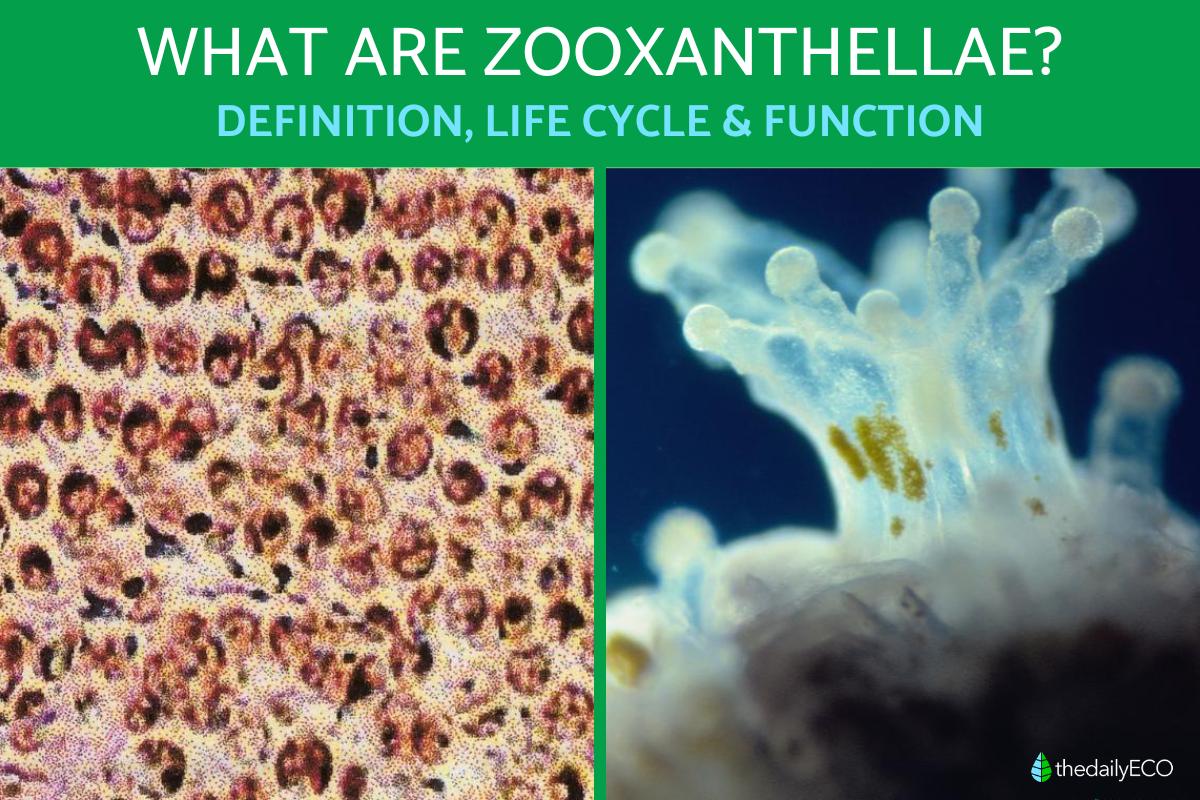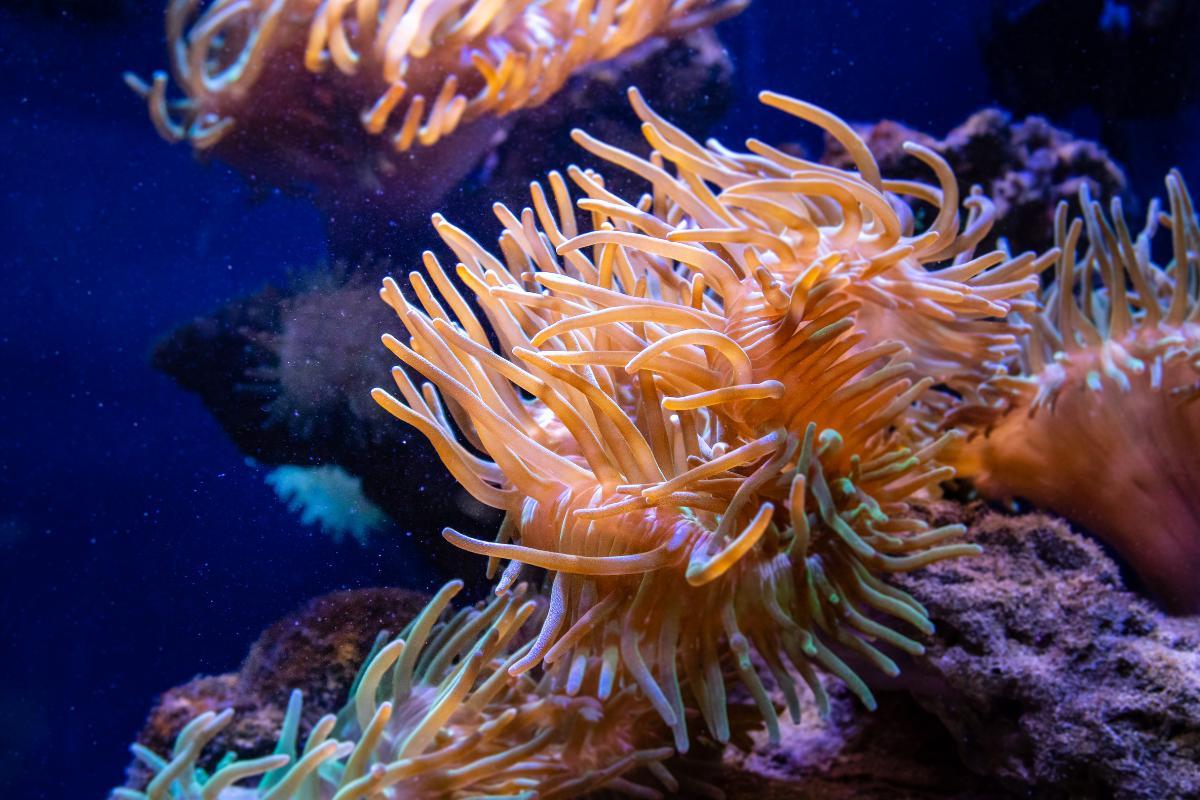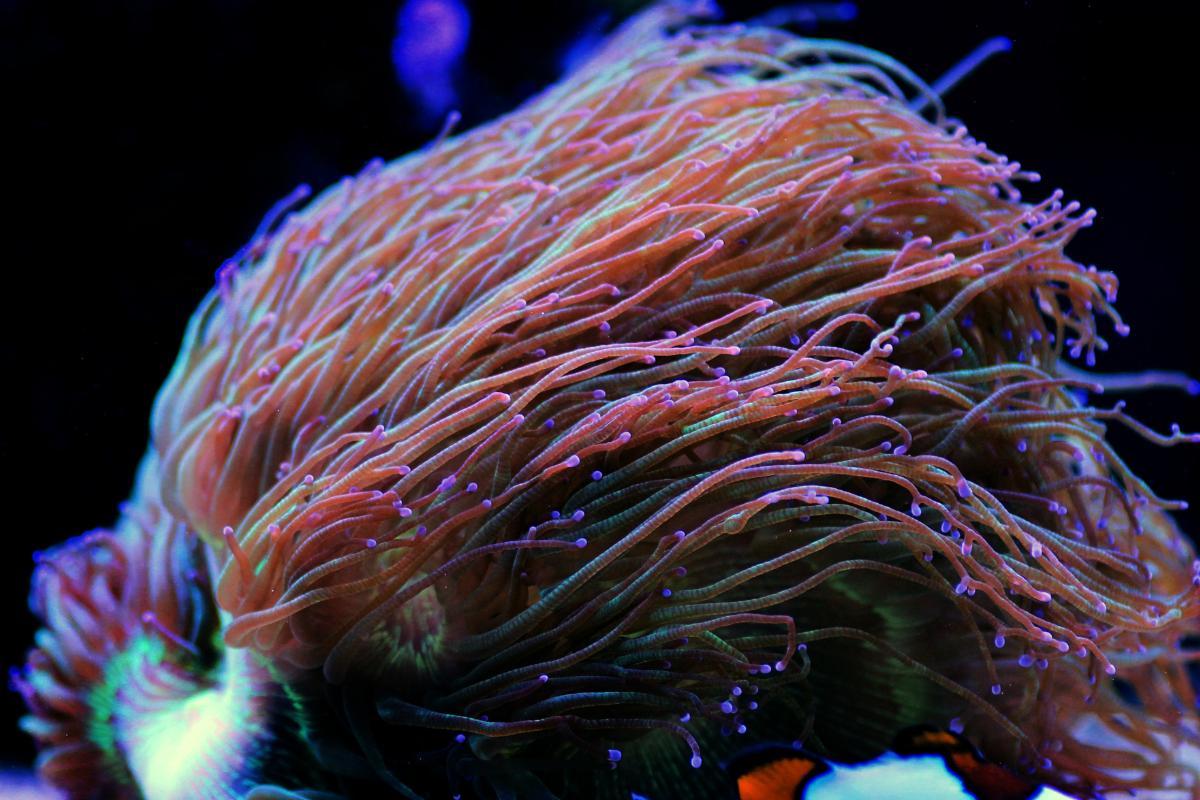What Are Zooxanthellae? - Definition, Life Cycle and Function


Zooxanthellae are symbiotic photosynthetic microalgae. Their symbiosis occurs with certain species of corals, anemones or jellyfish, as well as the giant clam (Tridacna gigas). The life cycle of zooxanthellae begins with asexual division, forming flagellated cells that later lose mobility. Their function is to provide carbon and nutrients to their host organisms.
The relationships between organisms are extremely important to maintain ecosystems in an integrated and functional cycle. These relationships are not always beneficial to all involved. Zooxanthellae are an example of a mutual form of symbiosis. thedailyECO shares more by asking what are zooxanthellae? We answer by providing a definition with examples, especially those that are symbiotic with coral.
What are zooxanthellae?
Zooxanthellae are photosynthetic unicellular microalgae that live in symbiosis with other organisms. Not all symbiotic species are mutually beneficial. Some can do harm to the host. Parasitism is perhaps the most common example of one organism benefiting to the detriment of the other. Zooxanthellae and coral are an example of mutualism, a mutual symbiosis which provides benefits to both parties.
Most zooxanthellae belong to the Symbiodiniaceae family. These are dinoflagellate organisms, single-celled eukaryotes that are one of the largest groups of marine eukaryotes. Many are from the Symbiodinium genus, although they can also be diatoms or other types of algae.
In this article we explain in more detail what is symbiosis in ecology definition with examples.

Zooxanthellae and coral symbiosis
Corals always have a heterotrophic diet, meaning they cannot produce their own food for survival. They eat by capturing plankton in their polyps. In addition to this way of feeding, many corals have a symbiotic relationship with zooxanthellae. When the coral has these types of relationships, they tend to obtain most of their energy from these microalgae. They are found in the tissue of each individual polyp that constitutes the coral.
What happens in symbiosis is that the algae carry out photosynthesis. Certain compounds that result from this are incorporated by the coral, using them mainly for nutrition, as well as reproduction and calcification. 90% of the carbon requirements of symbiotic corals come from algae. Learn more about how photosynthesis works with our related article.
In return, the corals provide the algae with inorganic nutrients for their growth and development. They also provide them a place to live. Both soft and stony corals can have this association, something that is determined by the species. Stony corals have a greater diversity of zooxanthellae, while in types of soft corals the symbiosis is more stable.
The season of the year also influences the symbiosis because they depend on environmental changes. If there are stress conditions, the algae can leave the coral with a 60 to 90% decline. This leads to coral bleaching, the loss of color that was previously given by the algae. This can happen in both stony and soft corals. It can occur in patches, because some zooxanthellae are more resistant to changes than others, but it can also occur throughout the colony.
If adverse conditions pass, the algae can return to the coral. If they are prolonged, as has happened with the warming of the oceans from human-caused climate change, the algae will not return. The corals will eventually die from vulnerability, especially from disease.
Corals that have zooxanthellae algae are found in shallow waters, exposed to sunlight and in areas in the tropical and subtropical regions. This is because they are completely dependent on the sun to be able to photosynthesize.
Symbiosis of zooxanthellae and other hosts
They can not only be found in corals, but also establish important symbiotic relationships with other organisms. The relationship and purpose of this symbiosis is similar to that mentioned with corals. Some examples include:
- Clonal anemone (Anthopleura elegantissima):an example of the many anemones that have zooxanthellae. In this species it was observed that the algae provide a sunscreen effect so that the anemone does not burn under the su. This is in addition to the other functions of simultaneous nutrition mentioned above for all symbioses with zooxanthellae.
- Upside-down jellyfish (Cassiopeia xamachana): many jellyfish can have zooxanthellae. In this case, they serve to obtain carbon, but they also need to capture prey as an external source of food.
- Giant clam (Tridacna gigas): it is a particular case because it is not a cnidarian, as are the majority of organisms that contain zooxanthellae.
Learn more about one type of coral with our article on the characteristics and habitat of gorgonian coral.

Life cycle of zooxanthellae
Each unicellular zooxanthellae divides every 1–3 days overnight into two new flagellated cells. They do so via a type of asexual reproduction. They will lose the flagellum with the change in photoperiod and transform into the typical coccoid morphology of the genus. This is present when it is in the growth stage and not in the division stage.
It is also assumed that there is sexual reproduction because tetrads have been observed during division. This suggests there is meiosis. However, there is still no certainty about this because there is no conclusive evidence to indicate meiosis. Learn more about the difference between meiosis and mitosis in our related article.
Zooxanthellae are obtained by different organisms by ingestion, absorbed by the ectoderm to be transported to the endoderm of the host or transmitted by a mother colony. It is not that organisms are born with zooxanthellae. Instead, they acquire them.

Ecological role of zooxanthellae
The most important ecosystem function of zooxanthellae is the production of calcareous skeletons in stony corals. These are the types of corals that make coral reefs. Part of the nutrients that are obtained from the photosynthesis of the algae are used for the development of the coral skeleton, an environment that will provide refuge for a huge variety of marine species. These include fish, marine sponges, crustaceans, echinoderms, soft corals, jellyfish, mollusks and other groups. To give an idea of their importance, these reefs are so rich in biodiversity that they are home to 25% of the species in the sea.
It has been shown that the symbiosis of zooxanthellae with stony and soft corals contributes to biochemical cycles. They also affect the contribution of global carbon by the exchange of metabolites between host and symbiont, being essential for the balance of ecosystems.
Now that you the definition, life cycle and function of zooxanthellae, you might want to learn more about algae in aquatic environments with our article on what are the causes of a red tide?

If you want to read similar articles to What Are Zooxanthellae? - Definition, Life Cycle and Function, we recommend you visit our Biodiversity category.
- Jahajeeah, D., Bhoyroo, V., & Ranghoo-Sanmukhiya, M. (2020). A review of soft corals (Octocorallia: alcyonacea) and their symbionts: distribution of clades and functionality. Western Indian Ocean Journal of Marine Science, 19(1), 123-141.
- Fragoso, G. (2000). Management of bleached or severely damaged coral reefs . Switzerland: IUCN World Conservation Union.








